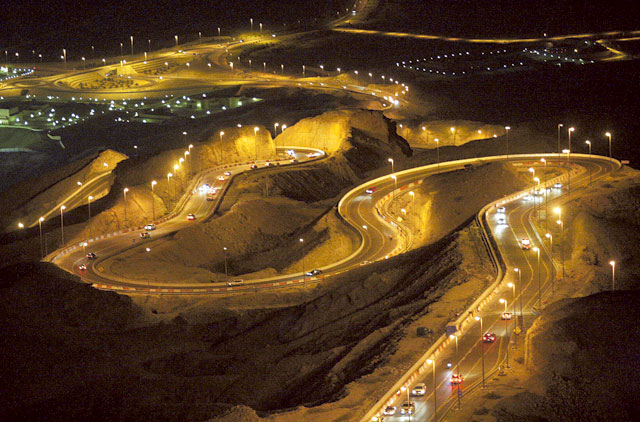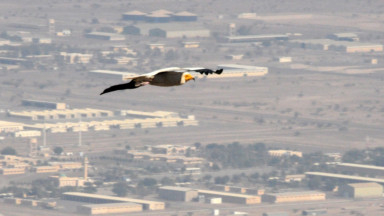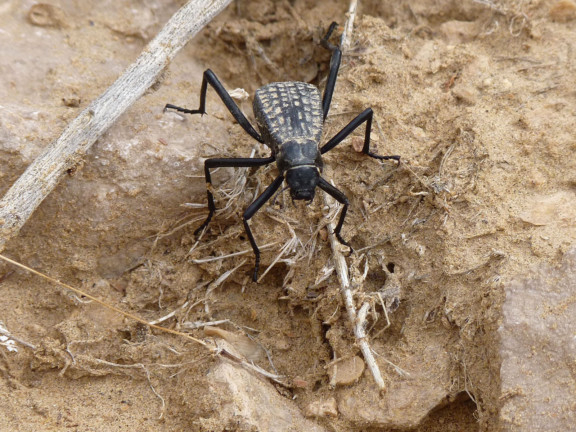
Al Ain: Unique species of insects have been found on Jebel Hafeet, one of the two highest mountains in UAE, and in its surrounding Wadis. They “may be… new to science”, says the Environment Agency — Abu Dhabi (EAD).
The discovery has been made through a hi-tech programme initiated by the EAD to monitor the wildlife in the area. The programme has successfully documented hundreds of species of animals, insects, birds, reptiles and plants — many of them endangered.
“We have recorded … unique species of insects such as the sand cockroach and minute moss beetle which may be species new to science,” said Dr Shaikha Salem Al Daheri, Executive Director of Terrestrial and Marine Biodiversity at the EAD. The insects have been found in the Wadi Tarabat — a Valley in the foothills of Jebel Hafeet.
The mountain, said Dr Shaikha, is also home to the rare Persian horned viper (Pseudocerastesp. persicus). This snake is found only in the mountainous parts of the emirates and neighbouring Oman at an altitude of 600 metres and above. “There are a few records of this species from Jebel Hafeet and is a very rare snake and only found at high altitude,” she said in an exclusive disclosure to Gulf News.
The main reptile species around Jebel Hafeet is Egyptian spiny-tailed lizard or Dhub. These lizards are common on the alluvial plains around the mountain and at the entrance of Wadi Tarabat. Other unique species, said Dr Shaikha, are the colourful Sinai rock agama and the fan-footed geckos.
Jebel Hafeet is a historically and archaeologically important area in the region. The EAD programme has discovered the hidden aspect of this majestic mountain and its Valleys, making it the most ecologically diverse and biologically rich area in the whole of the Arabian Peninsula, she said.
The programme has recorded approximately 315 species of invertebrates. They include scorpions, camel spiders, centipedes, moths, butterflies, beetles, ants, bees and wasps. The most common invertebrate species captured are beetles, ants, grasshoppers and ground mantises and peak periods in terms of abundance are between August, September and November.
Four species of darkling bettles namely Adesmia cancellata cothuranata, Thiraptera kraatzi, Trachyderma philistina, and Adesmia stoeckleini rasalkhymana and two ant species Monomorium wahibiensis and Monomorium tumairi were the frequently trapped invertebrate species from Jebel Hafeet.
Jebel Hafeet, which is also identified as an important bird area by the Birdlife International, has some important and unique types of birds. Species such as the hume’s wheatear (Oenanthe albonigra) and sand partridge (Ammoperdix heyi) are more exclusive to this mountain habitat.
“Over the last several years, more than 120 different species of birds have been recorded from Jebel Hafeet area with almost 40 species breeding there,” she said. The globally threatened Egyptian vultures (Neophron percnopterus) also have a small population in this area. Some other interesting species that are seen frequently are the bonelli’s eagle (Aquila fasciata), barbary falcon (Falco pelegrinoides) and the Arabian babbler (Turdoides squamiceps), said Dr Shaikha.
As part of species specific conservation efforts, she said, the EAD has launched a special Egyptian Vulture Monitoring Programme to understand the dynamics of the bird’s numbers in the area and some aspects of its ecology. “Future activities would include studying the movements and migration of the species using small solar powered satellite transmitters,” she said.
Jebel Hafeet also boasts diverse vegetation zones namely Acacia tortilisparkland, montane wadi association and dwarf shrub vegetation of the rocky slopes with Euphorbia larica. Based on the collections and records during 2001- 2012, a total number of 177 vascular plants were identified from this area belonging to 144 genera and 53 families, she said.
The area has local endemics like the oriental cherry, locally known as qafas (Acridocarpus orientalis) which is considered as a near threatened species and the dwarf palm (Nanorrhops ritchieana) that is considered as vulnerable and Schweinfurthia imbricata which is enlisted as critically endangered in the UAE. The maidenhair fern (Adiantum capillus veneris) was also recorded from Wadi Tarabat for the first time in July 2012, she said.
The EAD was established in 1996 to preserve Abu Dhabi’s natural heritage and raise awareness on environmental issues. The agency is Abu Dhabi’s environmental regulator and advises the government on environmental policy. It works to create sustainable communities, and protect and conserve wildlife and natural resources. It also works to ensure integrated and sustainable water resources management, to ensure clean air and minimise climate change and its impacts.
















